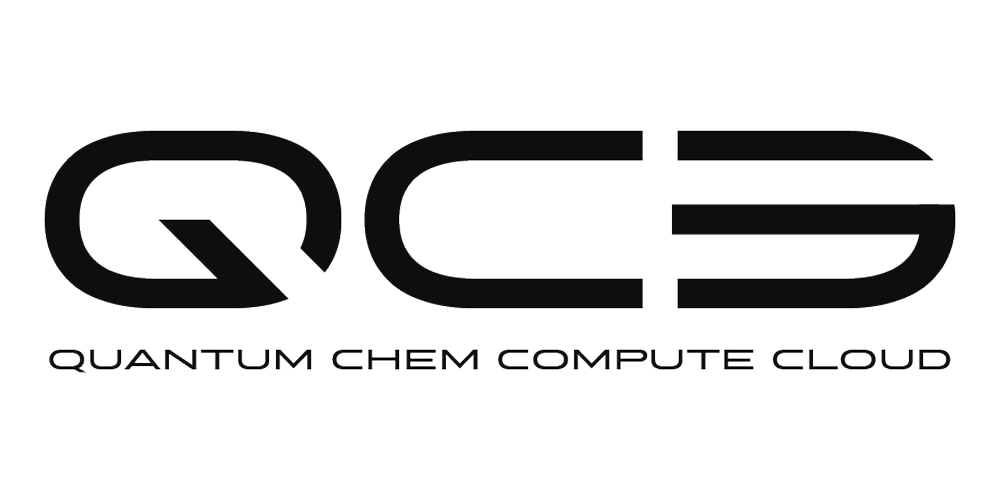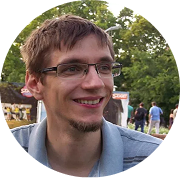Quantum Chemistry
Compute Cloud
High-performance quantum chemistry calculations in the cloud. Accelerate your research with scalable computational resources.
Quantum Chemistry Solutions
Advanced quantum chemistry calculations and molecular simulations powered by high-performance cloud computing.
COMBINING
the benefits of both (Software & Hardware) worlds
EASIER & SUPERFAST
calculating larger systems
NO USAGE BOUNDARY
WS image is ready to use
LOW INITIAL STEP
WS image is ready to use
SECURITY
No one but the client can access the cloud instance
Powered by Advanced Infrastructure
Our cloud platform is built on enterprise-grade infrastructure designed for computational chemistry workloads.
High-Performance Computing
GPU-accelerated clusters with up to 10,000 cores for parallel processing.
Scalable Storage
Petabyte-scale storage with high-speed access for large molecular databases.
Real-Time Processing
Ultra-low latency computing with results delivered in minutes, not hours.
Enterprise Security
SOC2 compliant infrastructure with end-to-end encryption and access controls.
THE BENEFITS OF BOTH WORLDS
Tailored quantum chemistry solutions for diverse industries, from pharmaceutical research to advanced materials engineering.

Psi4
Psi4 is a feature rich quantum chemistry software having solutions for Density Functional Theory (DFT), Moller-Plesset perturbation Theory (MP2), and Coupled-Cluster (CC) type of calculations. Its C++/Python core with clean interfaces and modular build makes it a prime candidate to cooperate with the QC3 module. It has a wide user and developer base ranging from drug research to theoretical chemists, from quantum computing to machine learning experts.

QC3
Our software solution (QC3) for simulating systems with thousands of atoms is a magnitude faster than one of the market leading solution. This is caused by our unique technology of using GPUs as calculation backend. As far as we concerned this is the first fully functional ab-initio simulator that uses GPU as the main computation device for high accuracy quantum chemical calculations. QC3 enables a more accurate and time-efficient simulation of large molecules of high angular momentum orbitals and quantum systems.
Ready to Transform Your Research?
Join leading organizations worldwide who trust QC3 for their computational chemistry needs.
Pioneering Computational Chemistry
Founded by world-class scientists and engineers, QC3 is revolutionizing how researchers approach molecular simulation with quantum-accurate cloud computing solutions.
Our Mission
To accelerate scientific discovery by making quantum chemistry computations accessible, scalable, and affordable for researchers worldwide. We believe computational power should never be a barrier to breakthrough discoveries.
Renowned Academic Team with International Publications & University Affiliations

Tornai Gábor PhD.
(Team Leader)
He received his MSc degree in computer engineering in honors in 2009 from the Pázmány Péter Catholic University, Faculty of Information Technology and Bionics. He received his PhD degree in 2014. The title of his dissertation was Medical image processing on bio processor architectures. He won second prize at national scientific student conference both as a student and teacher based on his academic work he won the Hungarian Government Scholarship twice. His research interest is mainly focused on GPU optimization, medical imaging algorithms, and numerical methods. He submitted several conference and research papers connected to these research areas.

Ádám Rák PhD.
(GPU Expert)
He received his MSc degree in computer engineering in honors in 2010 from the Budapest University of Technology and Economics. Earlier his received second place at the international Mathematical Olympiad (IMO), and the second prize at the International University Mathematics Competition (IMC), and he received first prize five times in the mathematical competition of the university. His university research was related to the optimization of visualizations of 3D medical data. He had worked on holographic-based image processing at MTA SZTAKI for two years. He took part in the development of camera tracking and 3D spatial scheme data since 2013 he has been participating in the development of a GPGPU-based quantum chemical simulation software.

György Cseray PhD.
(Advisor)
Graduated as an computer engineer and earned his PhD in information science. His main interests are massively parallel computer architectures, compiler technology and machine learning. Owner and author of several patents.He received his MSc degree in computer engineering in honors in 2002 from the Pázmány Péter Catholic University, Faculty of Information Technology and Bionics, He received his PhD degree in 2014. The title of his dissertation was Team-based RACER array processor and algorithm implementation in methods and their applications in parallel, heterogynous computing architectures. He won three prizes at national scientific student conferences. He automated the optimization and design of nonlinear, chaotic, analog circuits.

Kis Gergely
(Lead developer)
Graduated as electrical engineer, earned his PhD. In infocommunications. His main interests are multiprocessor-systems and cellular neural networks. Innovation Vice-Dean later at the Pázmány Péter Catholic University. He has an expert knowledge in project coordination and incubation. Several successful projects prove his just to name a few.. One label firm stands out Gyuri project(keet)Vice-dean at the Pázmány Péter Catholic University (PPCU), Faculty of Information Technology and Bionics. He received the M.Sc. degree in electrical engineering from the University of Technology and Economics, Budapest. From April 2003 to June 2004 he spent one year at Notre Dame University (Indiana, USA) as PhD. student working on a Cellular Nonlinear Network (CNN) project related to image processing for robotic and immune response.
Publications
Calculation of quantum chemical two-electron integrals by applying compiler technology on GPU
In this article, we present an effective approach to calculate quantum chemical two-electron integrals over basis sets consisting of Gaussian-type basis functions on graphical processing unit (GPU). Our framework generates several different variants called routes to the same integral problem with different ways to the solution. Each route is benchmarked and the best is selected for each GPU architecture.
ViewTowards chemically accurate QM/MM simulations on GPUs
In this article we evaluate our GPU-accelerated ONIOM implementation by measurements on the crambin and HIV integrase proteins with different size QM model systems. We demonstrate that by using a larger QM region, a better energy accuracy can be achieved at the expense of simulation time. This trade-off is important to consider for real running QM/MM calculations.
ViewClassical molecular dynamics on graphics processing unit architectures
In the recent years, implementing MD simulations on graphics processors has gained a large interest, with multiple popular software packages including some form of GPU-acceleration support. Different approaches have been developed regarding various aspects of the algorithms, with important differences in the specific solutions. Focusing on published works in the field of classical MD, we describe the chosen implementation methods and algorithmic techniques used for porting to GPU, as well as how recent advances of GPU architectures will provide even more optimization possibilities in the future.
ViewOptimized GPU implementation of Merck molecular force field and universal force field
In this article we demonstrate novel GPU implementations of the well known Merck Molecular Force Field (MMFF94) and Universal Force Field (UFF) algorithms which are near to utilize the theoretical peak performance of the GPU the software runs on. A double-precision speedup of 55x for MMFF94 and 140x for UFF is achieved, with the factor being 90x for the single-precision implementation of MMFF94.
ViewThe BRUSH algorithm for two-electron integrals on GPU
This Letter presents a new algorithmic method developed to evaluate two-electron repulsion integrals based on contracted Gaussian basis functions in a massively parallel way. This new algorithm scheme provides distinct SIMD (single instruction multiple data) optimized paths which symbolically transforms integral parameters into target integral algorithms. Our measurements indicate that the method gives a significant improvement over the CPU-friendly PRISM algorithm. The benchmark tests (evaluation of more than 108 integrals using the STO-3G basis set) of our GPU (NVIDIA GTX 780) implementation showed up to 750-fold speedup compared to a single core of Athlon II X4 635 CPU.
ViewGet in Touch
Ready to accelerate your research? Our team of quantum chemistry experts is here to help you get started.
Contact Information
Email Support
office@qc3.at
General inquiries and technical support
Phone
+43 699 12588899
Monday - Friday, 9:00 - 18:00 CET
Address
QC3 Biotech Solutions GmbH
Mariahilfer Straße 36 / 6, 1070 Vienna Austria
Emergency support available 24/7 for enterprise customers
Specialized Support
Enterprise Sales
enterprise@qc3.at
For pharmaceutical companies and large organizations
Academic Programs
academic@qc3.at
Special pricing for universities and research institutions
Partnerships
partners@qc3.at
Technology partnerships and integrations